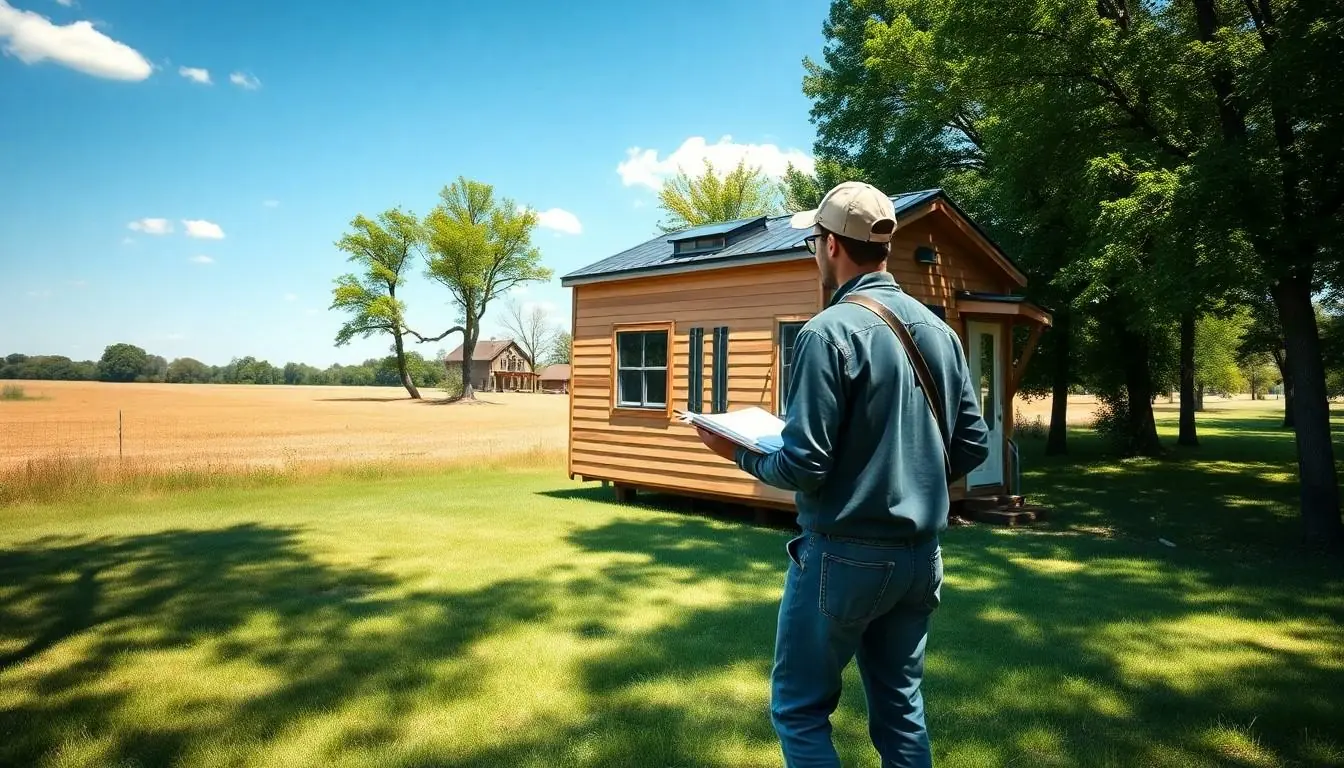In a world where bigger isn’t always better, tiny houses are making a big splash. Imagine living in a cozy space that’s not just a home but a canvas for creativity. DIY homestead projects can transform a small footprint into a personal paradise, and the best part? You don’t need a degree in architecture to get started.
From vertical gardens to composting toilets, these projects are as fun as they are functional. They’ll have you saying goodbye to the clutter of a traditional home and hello to a life of simplicity and sustainability. So grab your tools and roll up your sleeves—your tiny house adventure awaits! Who knew living small could feel so big?
Table of Contents
ToggleOverview of DIY Homestead Projects
DIY homestead projects provide an excellent opportunity for individuals to create functional and sustainable living environments. A variety of projects cater to different skills and interests, making the tiny house lifestyle both practical and enjoyable.
Benefits of Homesteading
Homesteading fosters independence and self-sufficiency. Individuals gain skills in areas like gardening, cooking, and building while also lowering their living costs. Sustainable practices contribute to environmental conservation, reducing waste and energy consumption. Additionally, DIY projects enhance personal satisfaction as individuals see their efforts transform into tangible results. People often find community support through local homesteading groups, leading to shared knowledge and resources.
The Rise of Tiny Houses
Tiny houses have gained popularity across the country, driven by a desire for minimalist living. Economic factors such as rising housing costs push many to seek smaller, more affordable alternatives. These structures encourage innovative design and efficient use of space. Various customization options appeal to diverse tastes, allowing individuals to express their unique styles. This trend aligns with a growing focus on sustainability, attracting those interested in reducing their carbon footprints.
Planning Your Tiny House Project

Planning a tiny house project requires careful thought and organization. Each step plays a crucial role in the overall success and sustainability of the building process.
Selecting the Right Location
Choosing the ideal location influences the tiny house experience significantly. Access to water, sunlight, and local resources are essential factors. Proximity to essential services like grocery stores, healthcare, and community resources enhances convenience. Additionally, considering zoning laws and building permits is vital; regulations vary by location. Adjacent natural resources can also support a more self-sufficient lifestyle, through gardening and rainwater collection, for example. Staying informed on local land use policies ensures compliance and long-term viability for the tiny house.
Budgeting for Your DIY Project
Establishing a budget provides a framework for the entire project. Listing all projected expenses including materials, labor, and permits sets clear financial expectations. Researching local material costs impacts budget accuracy and helps identify potential savings. Flexibility in budgeting accommodates unexpected expenses that may arise during construction. Prioritizing essential features, like insulation and safety, promotes efficient resource allocation. Furthermore, crafting a contingency fund for unforeseen challenges can protect the overall budget. Diligence in tracking expenditures minimizes financial stress throughout the project.
Essential DIY Homestead Projects for Tiny Houses
Creating a cozy and self-sufficient tiny house involves several essential DIY homestead projects. These projects enhance utility, sustainability, and charm in small living spaces.
Raised Garden Beds
Raised garden beds offer efficient growing space for vegetables and herbs in limited areas. Constructing these beds involves using materials like wood or bricks, resulting in better drainage while keeping the soil separate from pathways. This gardening method promotes easy access and maintenance, benefiting both novice and experienced gardeners. Residents can customize their beds’ heights, sizes, and configurations to fit personal preferences. Additionally, raised beds can improve soil health, allowing for crop rotation and companion planting techniques.
Rainwater Harvesting Systems
Rainwater harvesting systems collect and utilize rainwater, making them ideal for tiny house living. Installing a rain barrel or cistern captures runoff from rooftops, providing a valuable water source for irrigation and household use. This system can significantly reduce dependence on municipal water supplies. Proper filtration ensures clean water for various applications. Homeowners can choose from simple setups to advanced filtration and storage options, adapting the system to their unique needs. Incorporating rainwater harvesting promotes sustainability while saving money on water bills.
Off-Grid Power Solutions
Off-grid power solutions enable energy independence, crucial for tiny house owners. Solar panels represent a popular choice, generating electricity from sunlight to power essential appliances. Designing a system involves evaluating energy needs and available sunlight to determine panel size and battery storage. Wind turbines can complement solar energy, especially in windy locations, providing an additional power source. Both options contribute to a sustainable lifestyle, lowering utility costs and environmental impact. Homeowners can confidently embrace off-grid living, utilizing renewable resources to enjoy greater freedom.
Interior Design Ideas for Tiny Houses
Interior design for tiny houses blends creativity and functionality. Space optimization remains essential for making small living spaces comfortable and stylish.
Space-Saving Furniture
Space-saving furniture enhances usability without sacrificing style. Folding tables serve dual purposes, functioning as dining and workspace options. Storage ottomans provide hidden compartments for blankets and books while offering extra seating. Murphy beds fold up into walls to create open areas during the day, maximizing floor space. Compact kitchen islands not only add prep space but also feature seating, transforming cooking into a social experience. Design choices, such as nesting tables, further contribute to floor efficiency while maintaining aesthetic appeal.
Multi-Functional Rooms
Multi-functional rooms maximize available areas, combining living, sleeping, and working spaces. Living rooms can double as guest bedrooms by incorporating sofa beds or daybeds, allowing for versatile use. Dividers, like curtains or bookcases, create privacy when needed, ensuring space flexibility. Home offices fit seamlessly into any corner, requiring just a desk and some shelving. Designing with built-ins can optimize storage, making room for everyday items without cluttering surfaces. Rooms that adapt to various functions increase both comfort and livability in tiny homes.
Embracing DIY homestead projects in tiny houses offers a pathway to a more sustainable and fulfilling lifestyle. By customizing living spaces through innovative design and practical solutions, individuals can create unique environments that reflect their values and needs.
The journey toward self-sufficiency and minimalism not only fosters independence but also cultivates a deeper connection with the environment. With each project undertaken, homeowners can enhance their tiny homes while enjoying the benefits of reduced living costs and increased functionality.
Ultimately, the choice to live in a tiny house is more than just a trend; it’s a commitment to a simpler life, rich in creativity and purpose.







